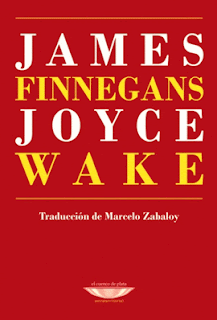Applied Ballardianism, Simon Sellars (reseña en inglés)
The Ballardian Desert
Ballardian times. In Mark Fisher’s
books, Capitalist Realism and Ghosts of My Life, and in Simon
Reynolds’ Retromania, it is proposed
that late capitalism has exhausted the future. For the last examples of
meaningful cultural theory concerning the future, we must return to the late
90s and stand-out texts such as Kodwo Eshun’s More Brilliant than the Sun (although we might consider The Matrix, too, with its "peak of
human civilisation" stuck in 1999). For much of the mainstream, and as a
more-or-less general description of the 21st century’s globalised
culture, the future has dissolved into an ineffable present, and the past has
become a theme park – as in Stranger
Things. And the most curious thing: none of this is surprising, because forty
years ago J.G. Ballard made that idea the core of his work. At first, he did it
in a catastrophic or post-apocalyptic way (as in his early novels The Drowned World, The Drought and The Crystal
World), but soon even that genre-bound appeal to a possible future was
unnecessary as his catastrophes became confined to the present or some faintly
parallel world – like the short stories in his Vermilion Sands collection.
No future. As Pablo Capanna wrote in El tiempo desolado, "time" is
one of the most frequent words found in Ballard’s work, more frequent than, for
instance, “space”. And Capanna wrote his book, by the way, at a time when it
was still possible to read Ballard as a warning. Perhaps there was something of
a tired culture’s utopia in those summers spent under the sun of Vermilion
Sands, with its coral towers, its sensitive houses and its cloud sculptors. It
was, for Ballard, the world of The
Persistence of Memory and The
Disquieting Muses but turned real. Now, we live in a world where the
autopsy of the future (to cite a key Ballardian theme) is re-enacted everywhere.
That’s our daily reality, and if at some time it was fascinating, now it’s just
terminal (as Ballard would say) ennui.
Orbis Tertius. What would happen if we
read the world surrounding us the way we read Ballard’s novels? That question
is the key to Applied Ballardianism:
Memoir from a Parallel Universe, the new novel by Simon Sellars: Ballardian
agents invaded Earth sometime in the 70s and, forty years later, the world
became not Tlön, as in Borges’ short story, but Vermilion Sands.
No alternative. Think of Ballard, then,
as a virus: an invasive code in the matrix of our reality. What would happen if
someone thought that was strictly true? Sellars’ novel traces the adventures
and misadventures of an aspiring academic who assumes the Ballardian nature of
the world: he reads Ballard’s books as if they were the key to the times we
live in, and our world as an extension of Ballard’s terminal beaches and
concrete islands.
Beautiful as a molten reactor’s core at Chernobyl. Maybe applying Ballardianism is not that hard. Why are we
fascinated with series like Netflix’s Dark
Tourist, with Soviet nuclear test sites in Kazakhstan, with catastrophe
zones in Pripyat and Fukushima, with ersatz cities raised in former
dictatorships or post-Soviet states like Turkmenistan? There is a new beauty
there, a beauty of the eerie as the presence of something that should be absent,
or the absence of something that should be present, following Fisher’s typology
in The Weird and the Eerie: the
beauty of the ineffable present, compartmentalised in many imitations of the
past, and of the futures we dreamed the day before yesterday. The myths of the
near future make up the theme park of the nuclear age: pictures of Chernobyl’s
"elephant foot" in the waiting room of our dentist.
Out of (inner) space, the call of the lurker at the threshold of
madness. But there’s more to Applied Ballardianism, not just because it provides abundant ways
to read it according to both halves of the “theory-fiction” formula, and not
just because it has a clear relationship with the novel as a genre. After all,
it’s easy to track the development of the narrator as he enters his downward
spiral, like a Quixote or a Madame Bovary imprisoned in addiction to theory.
No, it’s because in the folds and crevices of the world proposed by Sellars
there is always something more, something lurking in the threshold. Here and
there, through UFO sightings, urban legends, parallel worlds that threaten to
break through, ghosts and mysterious characters, a weird Lovecraftian world
threatens to manifest itself.
After the singularity. If it is true
that something is rotten in the state of Vermilion Sands, if it is true that
the future will come anyway, whether we can conceive it or not, then it will
take us by surprise and terrify us like the pale horse and the woodsmen in Twin Peaks: The Return. From the cracks
that open in our Ballardian world, the monsters of Lovecraft emerge, returned
to their purest, weird essence: that which cannot be (but is), that which we
cannot think about (but which confront us). The Applied Ballardianism of global
and late capitalism has drained our ability to think about the future, and
that’s why everything that’s about to come belongs to the field of the
unthinkable, to the weird. And so in the interstices of Applied Ballardianism appear the threats of a future as inhumane as
it is incomprehensible, as if the exit from the Ballardian theme park to which
we have moved years ago (or in which we have been locked up, if you like) was
(and is) waiting for us in Nick Land’s old texts from the 90s:
"Meltdown" and "Circuitries".
Cocaine Nights. Applied Ballardianism, as expected, abounds in references and
allusions to Ballard’s novels (Sellars’ protagonist struggles to finish his
doctoral thesis on Ballard). The process by which the world makes itself
Ballardian is lived through and commented on by the narrator in a clear
self-referential and meta-literary gesture, adding levels of complexity to the
novel and making re-reading necessary. At the same time, his travels and
adventures are highly novelistic. The
protagonist loses all sense of reality by immersing himself too much in his
reading and enacts the impossible to make sense of his delusions, triggered by
his struggle to distance himself from the Ballardcore continuum, so to speak, and
to rationalise his experiences (which stem from failed relationships, the
struggles of being an aspiring academic, mediocre jobs, drugs and travel). It
is as if the reality and power of the Ballardian virus are so undeniable that
any attempt to return to an understanding of the world pre-Ballard is destined
to failure.
The Overloaded Man. The protagonist is imprisoned
in a vicious circle. He has fallen victim to all the Ballardian traps and is no
longer able to do anything other than circulate through this spiral towards an
increasingly miserable and desolate world. Another possible way to read Applied Ballardianism, then, is to pay
special attention to the question of how we conceive ourselves as subjects in a
world that does away with all the old notions of subjectivity – a world that
multiplies doppelgangers, tulpas, clones and ghosts.
Applied Lovecraftianism, applied Lynchianism. Applied Ballardianism is
more than a beautifully crafted and fascinating novel: it’s an urgent book,
which seems to ask us to conceive our very inconceivable exit from the world
while watching the cracks from which the tentacles will emerge. As in Land's
writings, the future will come, but not in a way by which we’ll still
understand ourselves as human. If the character in Sellars's novel delves into
a Ballardianised world to equally Ballardianise himself, perhaps we must find a
way to weirdise ourselves, to think
the unthinkable at the very moment when it devours us.




Comentarios
Publicar un comentario